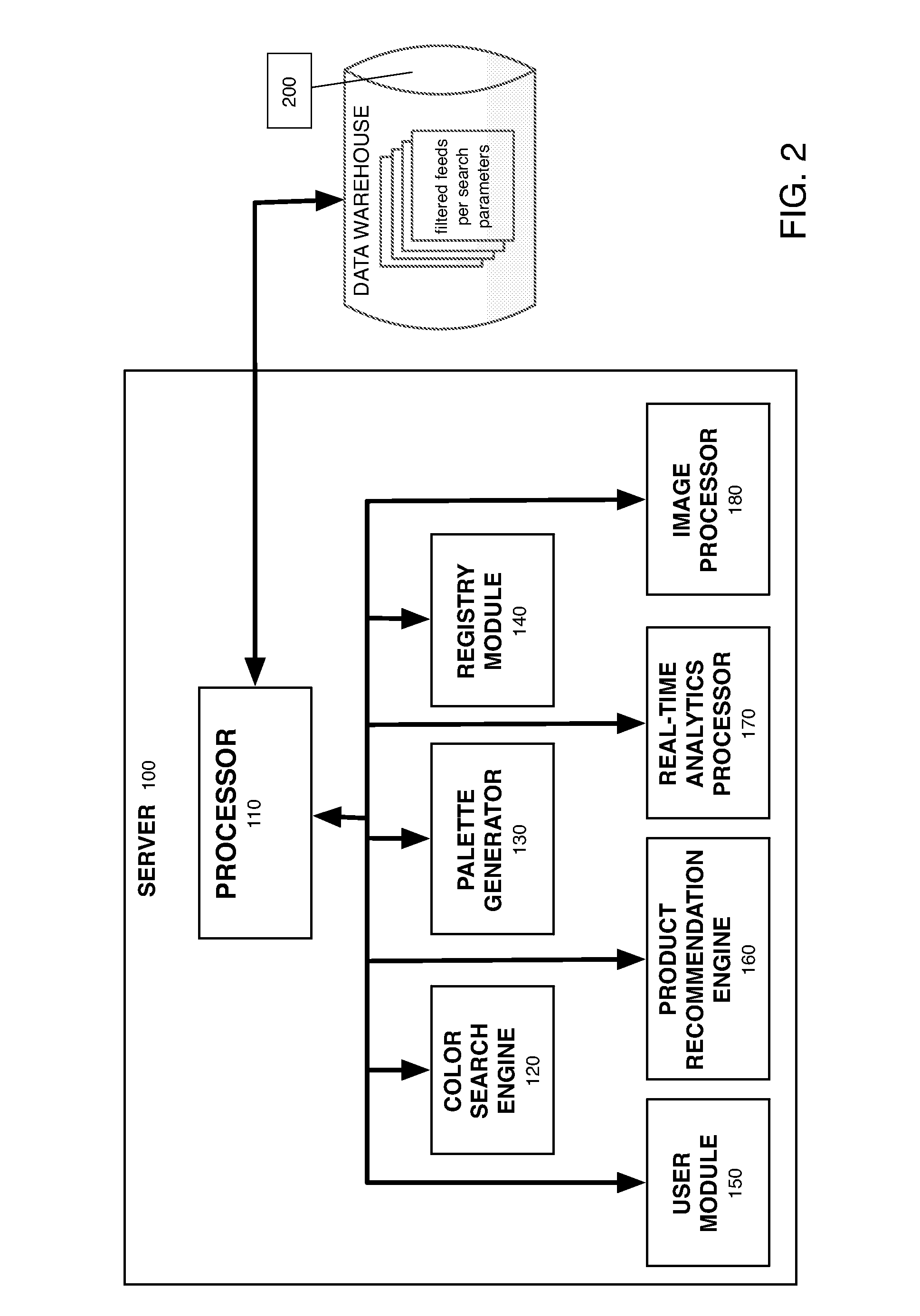System and method for identifying, searching and matching products based on color
a color and product technology, applied in the field of system and method for identifying, searching and matching products based on color, can solve the problems of virtually impossible to obtain reliable and complete search results when specific color shades are sought, and the search for patterns made of colors is extremely difficult, and the search for patterns is unlikely to turn up the desired patterns of particular colors
- Summary
- Abstract
- Description
- Claims
- Application Information
AI Technical Summary
Benefits of technology
Problems solved by technology
Method used
Image
Examples
Embodiment Construction
[0097]In accordance with an exemplary embodiment of the claimed invention, non-textual color-based systems, methods and interfaces are provided to search and match products based on color using a unified or universal color system as described in applicant's co-pending application Ser. Nos. 13 / 910,557 and PCT / US13 / 44317 (hereinafter “applicant's '557 application”), which is incorporated herein by reference in its entirety and not based certain textual representation of color. One of the most important factors that influence consumer purchase decisions is color, accordingly, the claimed invention proceeds upon desirability providing a system and method for searching and matching products based on color to provide consumers with in-store shopping experiences while shopping online.
[0098]In accordance with an exemplary embodiment of the claimed invention, the claimed color-based system and method can additionally collect, analyze and manage other non-color data, such as textual product d...
PUM
 Login to View More
Login to View More Abstract
Description
Claims
Application Information
 Login to View More
Login to View More - R&D
- Intellectual Property
- Life Sciences
- Materials
- Tech Scout
- Unparalleled Data Quality
- Higher Quality Content
- 60% Fewer Hallucinations
Browse by: Latest US Patents, China's latest patents, Technical Efficacy Thesaurus, Application Domain, Technology Topic, Popular Technical Reports.
© 2025 PatSnap. All rights reserved.Legal|Privacy policy|Modern Slavery Act Transparency Statement|Sitemap|About US| Contact US: help@patsnap.com



